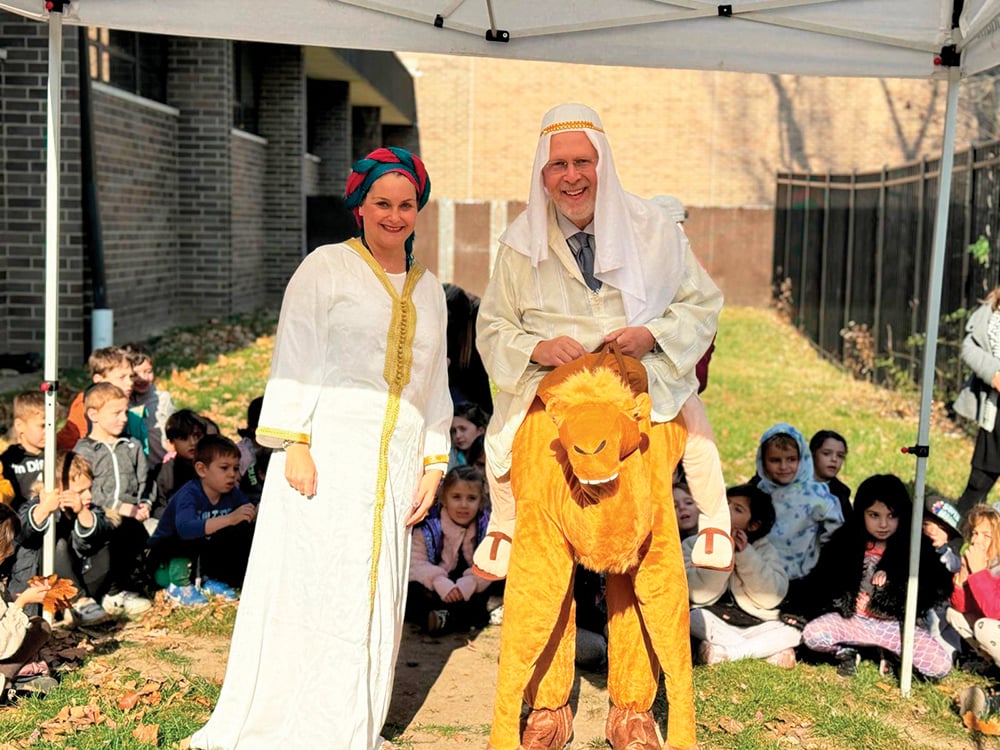When Adam was created, he arrived into a perfect world. There were skies and earth. Rivers and mountains. Plants and trees. Fish, birds and animals. He opened his eyes and declared, “The world was created for me!” And God replied, “Yes, Adam, the world was created for you. That should be your guiding principle throughout your life. Unless, of course, you become haughty, in which case do not forget that a mere mosquito preceded you!”
הַכֹּל חַיָּיבִין בִּרְאִיָּיה: גְּמָ׳ הַכֹּל לְאֵתוֹיֵי מַאי לְאֵתוֹיֵי סוֹמֵא בְּאַחַת מֵעֵינָיו וּדְלָא כִּי הַאי תַּנָּא דְּתַנְיָא יוֹחָנָן בֶּן דַּהֲבַאי אוֹמֵר מִשּׁוּם רַבִּי יְהוּדָה סוֹמֵא בְּאַחַת מֵעֵינָיו פָּטוּר מִן הָרְאִיָּיה שֶׁנֶּאֱמַר יִרְאֶה יֵרָאֶה כְּדֶרֶךְ שֶׁבָּא לִרְאוֹת כָּךְ בָּא לֵירָאוֹת מָה לִרְאוֹת בִּשְׁתֵּי עֵינָיו אַף לֵירָאוֹת בִּשְׁתֵּי עֵינָיו
תוספות: גריס ר”ת יראה יראה מה לראות בשתי עיניו שאדם בא להתראות לפני המקום בשתי עיניו של מקום אף האדם בא לראות המקום בשתי עיניו
Mishnah: Everyone is obligated in the mitzvah of appearance [at the Holy Temple for the three pilgrimage festivals]. Gemara: What does the reference to “everyone” include? It comes to include one who is blind in one of his eyes, thereby rebutting the view of this Tanna, as it is taught that Yochanan ben Dehavai says in the name of Rabbi Yehudah: One who is blind in one of his eyes is exempt from the mitzvah of appearance, as it is stated: “will appear [yeira’eh],” which may be read, “will see [yireh].” The same way one comes to see, so he comes to be seen: Just as the usual way to see is with both one’s eyes, so too the obligation to be seen applies only to one who comes with the sight of both of his eyes.
Tosafos: Rabbeinu Tam explains that the meaning of yeira’eh-yireh is that just as one appears at the Temple to be seen by both of God’s eyes, so must the person see God with both of his eyes.
Three times a year we have a mitzvah to make the pilgrimage trek to Jerusalem. Everyone is included, but Rabbi Yochanan ben Dehavai contends that a man who is blind in one eye is exempt from the mitzvah.
Why do we need two eyes, and what do they have to do with the three pilgrimage festivals?
The Toldos Yaakov Yosef teaches that our two eyes symbolize our physical ability to see as well as our mental ability to perceive. Coming to the Beis Hamikdash on the festival is not merely about enjoying the sights, it’s about contemplating the exaltedness of Hashem. The pilgrimage is a powerful spiritual experience designed to create a tremendous impact on our lives and carry us through the challenges of daily life in the intervening months until the next occasion we find ourselves in Jerusalem. Indeed, the Sefer Hachinuch writes that the experience should awaken our hearts and impress upon all of us, “from the small to the great,” that we are “Hashem’s portion and His inheritance, a holy and chosen people.”
Our two physical eyes actually demonstrate this extra level of perception. Try closing one of your eyes and looking at something at a distance. Can you tell how far away it is? Not really. With one eye, everything appears two-dimensional. The incredible gift of two eyes is the ability to see the world in 3D.
Sadly, many people see the world around them in 2D. They see someone act a certain way and are quick to judge them without considering what the context might be that led to that person’s behavior. Seeing with two eyes requires us to consider situations beyond what meets our two-dimensional view. Our intermittent visits to the Holy Temple serve as a reminder to see the world the same way Hashem does. He doesn’t judge us on a 2D level. He looks at our actions beyond the surface and treats us with love and compassion. And that’s how we too should see every person and every situation—with the constant contemplation of what circumstances may lie beyond our 2D shallow view.
The Avodas Yisrael offers a slightly different take on the significance of seeing with two eyes. He explains that one eye is there to recognize the greatness of the Almighty, while the other is there to recognize our own personal worth. When a pilgrim arrives at the Holy Temple, he should feel spiritually inspired and reinvigorated by everything that he sees. His soul should be stirred to bond with his Maker. However, sometimes a person may be so overwhelmed by his reverence for Heaven that he feels unworthy to entreat Hashem, thinking: Why would Hashem listen to my prayers? Why would Hashem have time for a lowly creature like me?
And so, the second eye symbolizes the way we see ourselves. When we diminish our estimation of ourselves and are no longer able to perceive our personal self-worth, we will inevitably fail to achieve our potential. Stop doubting yourself; God thinks that you are amazing!
Similarly, the Kol Mevaser analogizes the idea of seeing with two eyes to the instruction of our Sages that “One should always enter through two entrances of the synagogue and then afterwards he should pray.” The two entrances, he explains, are the two contrasting ideas that one must maintain constantly: “The world was created for me” and “I am but dust and ashes.” Yes, it’s true that you shouldn’t have an inflated sense of self-worth. But, at the same time, you must always remember that you have a special mission that no other person can fulfill. The world was created for you!
The Almighty placed you here on Earth to make a unique difference that no other person can make. The world was created for you and Hashem cares deeply about you. May you constantly keep both of your eyes focused on your life’s mission: to make this world a Godly abode!
Rabbi Daniel Friedman is the author of The Transformative Daf series.













